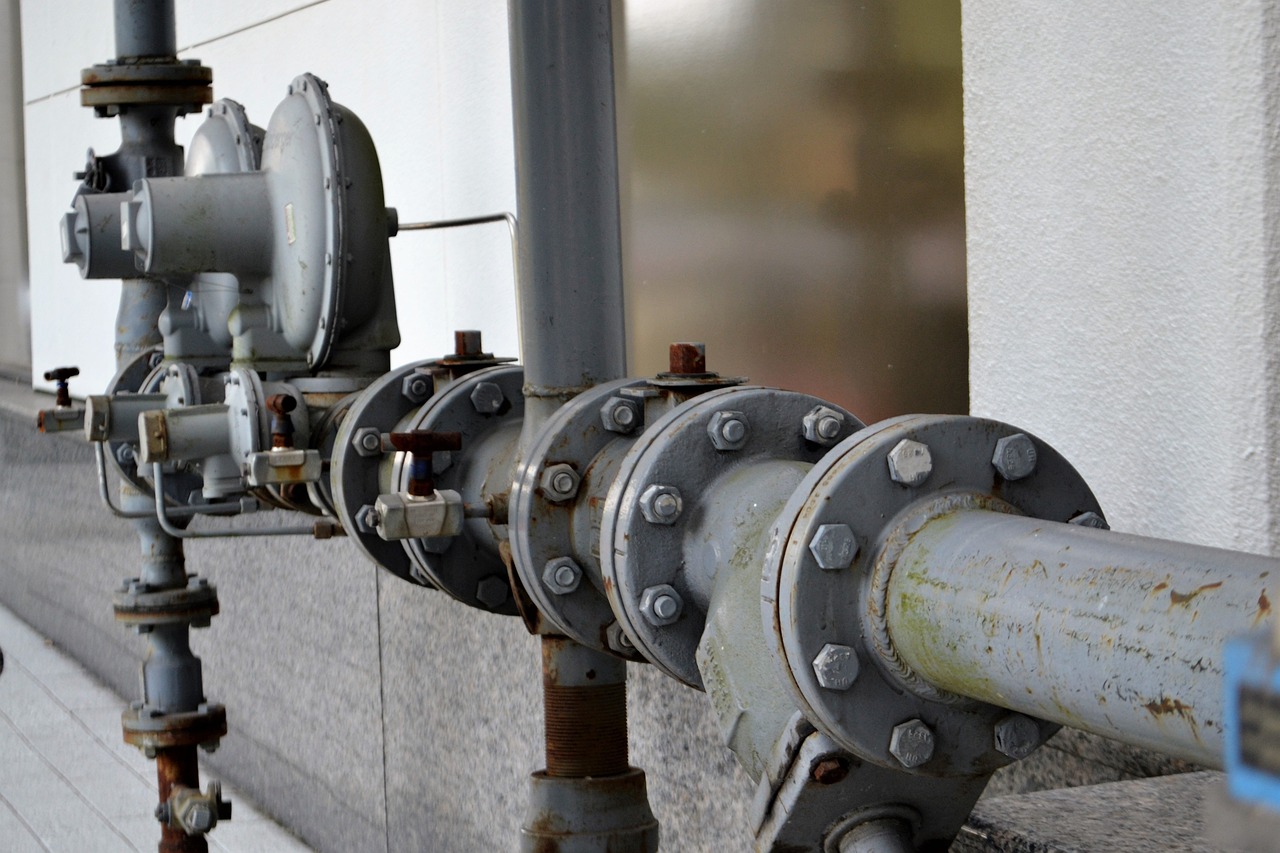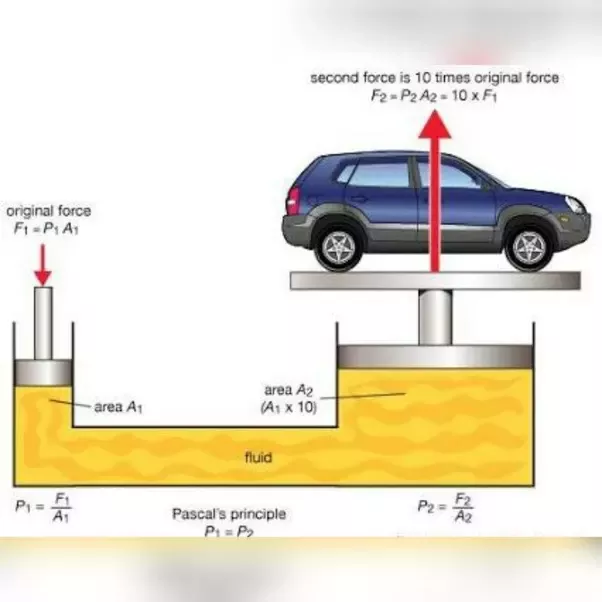Introduction
The ancient world is rife with examples of remarkable engineering feats, but few stand as prominently as the aqueducts. These majestic water transport systems, spanning across civilizations and centuries, were marvels of engineering that harnessed the power of hydraulic principles. In this exploration, we delve into the world of aqueducts, unraveling the intricate engineering and hydraulic principles that underpinned their construction and operation.
In the tapestry of human history, the ancient world’s brilliance is woven with remarkable engineering marvels, and among them, the aqueducts rise to prominence as enduring symbols of human ingenuity. These majestic water transport systems, which traversed civilizations and centuries, remain unrivaled feats of engineering. They embodied the meticulous application of hydraulic principles that shaped their design and operation. As we embark on this exploration, we peel back the layers of time to uncover the fascinating world of aqueducts, shedding light on the intricate engineering and hydraulic mastery that brought these marvels to life.
At the heart of the aqueduct’s grandeur lay a profound understanding of hydraulic science, a knowledge that transcended its era. Aqueducts were not mere conduits; they were sophisticated hydraulic systems, designed with meticulous precision to control the flow of water. Ancient engineers, often working with rudimentary tools and materials, masterfully manipulated the forces of nature to ensure a continuous supply of fresh water to cities and communities.
One of the central principles that underpinned aqueduct design was the concept of gravity. These structures relied on gravity’s gentle pull to guide water from higher elevations, typically mountain springs, to lower-lying urban centers. The aqueduct’s gradient and elevation were precisely calculated to ensure that water flowed smoothly and consistently. Engineers carefully crafted channels, tunnels, and arches, all designed to optimize the gravitational forces at play.
Intricate aqueduct systems were often equipped with ingenious features such as settling pools and filtration systems. These elements served to purify the water by allowing sediment and impurities to settle out, ensuring that the liquid that reached the city was of the utmost purity. Such attention to water quality was a testament to the engineers’ commitment to public health, long before modern understandings of microbiology.
These aqueducts, which reached their zenith in the Roman Empire, not only supplied the basic necessity of life but also nurtured the growth of thriving civilizations. They facilitated not only sustenance but also innovation, trade, and cultural exchange. They were not just engineering marvels; they were the lifeblood of ancient cities.
Today, as we marvel at the remnants of these ancient aqueducts, we’re reminded of the timeless power of human knowledge and innovation. These engineering masterpieces continue to inspire, serving as a testament to the enduring legacy of those who dared to harness the forces of nature to improve the human condition. In an ever-evolving world, the lessons of the aqueducts echo, emphasizing the value of understanding hydraulic principles and the remarkable heights that human engineering can achieve when inspired by both necessity and a thirst for knowledge.
Explore this link for a more extensive examination of the topic: Roman Aqueducts
The concept of aqueducts can be traced back to ancient civilizations like the Romans, Persians, and Greeks. As urban centers expanded, so did the demand for clean and reliable water sources. Aqueducts emerged as ingenious solutions, providing a means to transport water from distant springs, rivers, or reservoirs to urban areas. This innovation not only revolutionized urban living but also showcased a deep understanding of hydraulic principles.
The concept of aqueducts, with its roots firmly anchored in the history of illustrious ancient civilizations such as the Romans, Persians, and Greeks, is a testament to the enduring quest for progress and the profound connection between water supply, public health, and urban development.
In the annals of history, as urban centers burgeoned, so did the clamor for clean and dependable water sources. The emergence of aqueducts stands as a hallmark of human innovation, addressing this pressing need with ingenious solutions that transcended time and geography. These remarkable systems of aqueducts, featuring intricate networks of channels, tunnels, and reservoirs, served as the conduits through which the precious elixir of clean water flowed from distant springs, meandering rivers, or carefully engineered reservoirs to quench the ever-increasing thirst of burgeoning urban areas.
The profound significance of aqueducts extends well beyond their structural grandeur. They were not just conduits of water but conduits of progress. This innovation heralded a new era in urban living, where access to a consistent and uncontaminated water supply was no longer a luxury but a fundamental necessity. This transformation was a pivotal moment in public health history as it marked a significant reduction in waterborne diseases that had long plagued human societies. The introduction of clean water into the fabric of daily life meant a substantial improvement in the overall well-being of urban populations.
What is particularly striking about these ancient aqueducts is the deep understanding of hydraulic principles that underpinned their design and construction. Engineers and architects of these ancient civilizations displayed an unparalleled mastery of fluid dynamics, terrain management, and structural engineering. Their ability to conceive and execute such complex water transportation systems remains a testament to human ingenuity and the tireless pursuit of solutions that benefit society as a whole.
The legacy of ancient aqueducts serves as a reminder of the enduring relationship between clean water, urbanization, and public health. In our modern era, where access to clean water remains a global challenge, we can find inspiration in the lessons of the past. The commitment to innovative solutions that ensure clean and accessible water is not merely an engineering marvel but a profound commitment to the health and prosperity of communities. As we confront contemporary water challenges, the ancient aqueducts stand as a timeless beacon, guiding us toward a future where clean water is a fundamental right for all.
Explore this link for a more extensive examination of the topic: How did ancient Rome manage to build so many roads, aqueducts …
At the heart of aqueduct engineering lies the principle of gravity. Water, when transported through aqueduct channels, flows downhill due to gravity. Engineers meticulously calculated gradients and slopes to ensure a consistent and controlled flow of water. This understanding of gravitational forces was fundamental to the success of aqueducts.
The brilliance of aqueduct engineering was rooted in a profound understanding of one of nature’s most fundamental forces: gravity. At the core of this engineering marvel was the simple yet ingenious principle that water, when channeled through aqueducts, would naturally flow downhill under the influence of gravity.
Engineers of ancient civilizations grasped the significance of this concept, and their meticulous calculations and precise measurements made it a reality. They carefully designed aqueducts with the perfect gradients and slopes, ensuring that the water’s journey was not only continuous but also controlled. This mastery of gravitational forces became the linchpin of aqueduct success.
The importance of this principle cannot be overstated. It not only facilitated the efficient transport of water over long distances but also made aqueduct systems remarkably reliable. Unlike complex machinery or energy-dependent systems, aqueducts harnessed the Earth’s own forces to deliver the life-giving resource of water.
This understanding of gravity’s role in aqueduct engineering not only stands as a testament to the ingenuity of ancient engineers but also highlights a broader lesson for engineering and innovation. It underscores the value of working in harmony with the natural world, harnessing its inherent forces to meet essential human needs. In today’s world, as we grapple with the challenges of sustainability and resource management, the ancient wisdom of aqueducts serves as a timeless reminder that cooperation with nature can yield some of the most enduring and effective solutions. It’s a lesson that transcends the ages, reminding us that the beauty of science and engineering often lies in their ability to harness the power of the universe to serve the needs of humanity.
For additional details, consider exploring the related content available here The History of Hydraulics: From Ancient Times to Modern Day

The design and construction of aqueduct channels were feats of precision. Engineers employed various techniques to maintain a gentle gradient along the channels, ensuring that water flowed smoothly without causing erosion or blockages. These channels often featured precise curves, tunnels, and even inverted siphons to navigate challenging terrain.
The design and construction of aqueduct channels in ancient civilizations were nothing short of astonishing feats of precision and ingenuity. Engineers of antiquity employed a remarkable array of techniques to ensure that these vital conduits for clean water functioned flawlessly, serving their communities with a consistent and reliable water supply.
One of the most remarkable aspects of aqueduct engineering was the meticulous attention to maintaining a gentle gradient along the channels. This precision was crucial to ensure that water flowed smoothly and steadily from its source to its destination, avoiding the perils of erosion or blockages that could disrupt the entire system. Engineers carefully calculated the gradient to optimize the flow rate while preventing excessive wear and tear on the channel’s structure.
The complexity of aqueduct construction often demanded innovative solutions to navigate challenging terrain. Engineers were not limited by the natural contours of the landscape; instead, they incorporated ingenious design elements to overcome obstacles. Precise curves were introduced to follow the contours of hills and valleys, allowing the aqueducts to gracefully adapt to the terrain. These curves not only ensured the even flow of water but also added a touch of architectural beauty to the landscape.
In situations where elevation changes posed a significant challenge, engineers employed the remarkable technology of inverted siphons. These siphons used a combination of pipes and air pressure to transport water uphill and across depressions, effectively defying gravity. The accuracy required to design and construct such systems was extraordinary, showcasing the engineers’ unparalleled mastery of hydraulic principles.
Tunnels were another remarkable feature of aqueducts, enabling these systems to traverse through mountains and rocky terrain. The construction of these tunnels demanded remarkable precision, as engineers had to align them precisely with the channel’s path and ensure structural stability. The use of aqueduct tunnels allowed cities to access pristine water sources that would have otherwise remained inaccessible.
These intricate design elements were not merely feats of engineering but also expressions of a profound commitment to public health and urban development. Aqueducts, with their precision engineering and meticulous planning, transformed the very landscapes they traversed. They served as lifelines for cities, bringing clean water to thirsty populations, safeguarding their health, and enhancing the quality of life.
In the modern world, as we continue to face challenges related to water supply and infrastructure, the lessons from the precision of ancient aqueducts remain relevant. They remind us that thoughtful engineering, meticulous planning, and innovative solutions can overcome the most daunting challenges. The legacy of aqueducts is a testament to the enduring power of human ingenuity and the extraordinary impact it can have on the well-being of communities.
Should you desire more in-depth information, it’s available for your perusal on this page: Hydropower and Renewable Energy Issue | The Knowledge Stream …

Perhaps one of the most iconic features of aqueducts is the use of arches. Arches were employed to bridge valleys and create elevated sections of the aqueduct, allowing water to flow across uneven landscapes. This architectural marvel not only served a functional purpose but also added to the grandeur of aqueduct structures.
Architectural Marvels: The Beauty and Functionality of Aqueduct Arches
The use of arches in aqueduct construction stands as a remarkable testament to the fusion of form and function in ancient engineering. These iconic features not only served the practical purpose of bridging challenging terrains but also contributed to the awe-inspiring grandeur of aqueduct structures. The marriage of beauty and functionality in aqueduct arches continues to captivate our imagination.
1. Bridging Natural Obstacles
One of the primary functions of aqueduct arches was to traverse natural obstacles like valleys, rivers, and uneven landscapes. These arches allowed aqueducts to maintain a continuous and unobstructed flow of water, regardless of the topography. By gracefully spanning these obstacles, aqueducts ensured a reliable water supply to distant urban centers.
2. The Elegance of Arch Design
The design of aqueduct arches was nothing short of elegant. Engineers and architects meticulously calculated the size and shape of arches to achieve both stability and visual harmony. The symmetrical curves and graceful lines of aqueduct arches added a sense of timeless beauty to the landscape.
3. An Engineering Triumph
The construction of aqueduct arches was a feat of engineering prowess. Engineers had to consider factors such as the weight of the water, the angle of descent, and the materials used. These arches were often constructed using stones or bricks, carefully arranged to distribute the weight evenly and create a structurally sound form.
4. Symbolic Significance
Beyond their practical utility, aqueduct arches held symbolic significance. They represented the triumph of human ingenuity over nature’s challenges. The sight of water flowing gracefully across these architectural wonders evoked a sense of wonder and awe among ancient inhabitants, serving as a testament to the power of human innovation.
5. Modern Inspiration
The legacy of aqueduct arches endures in modern architecture and engineering. Contemporary architects and engineers draw inspiration from these ancient structures when designing bridges, viaducts, and other infrastructure projects. The timeless elegance and structural stability of aqueduct arches continue to inform and inspire modern construction.
Conclusion: The Enduring Legacy of Aqueduct Arches
Aqueduct arches are not merely relics of the past; they are enduring symbols of human creativity and determination. These graceful structures, born of necessity, transcended their utilitarian function to become architectural marvels that continue to inspire admiration and reverence. As we reflect on the elegance and functionality of aqueduct arches, we are reminded of the profound impact that engineering and design can have on our understanding of the world and our ability to overcome even the most formidable challenges.
Additionally, you can find further information on this topic by visiting this page: Roman Engineering – World History Encyclopedia

Aqueducts were not just about transporting water; they were integral to its distribution. Engineers designed reservoirs to store and regulate the flow of water. These reservoirs acted as buffers, ensuring a continuous and reliable water supply to urban centers.
Aqueducts were not just about transporting water; they were integral to its distribution and management, showcasing the remarkable foresight of ancient engineers. In addition to the grandiose arches and meticulously laid channels, these visionary minds designed reservoirs as pivotal components of their water supply systems. These reservoirs served as more than mere water storage facilities; they were the guardians of urban well-being, ensuring a continuous and reliable water supply to bustling urban centers.
The role of these reservoirs was multifaceted. Firstly, they functioned as buffers, absorbing the fluctuations in water flow from the distant sources. This was especially critical in regions prone to seasonal variations in rainfall, ensuring that the city had a steady supply of water regardless of external conditions. Reservoirs acted as natural regulators, storing surplus water during times of abundance and releasing it during times of scarcity, thus maintaining a consistent flow into the city.
Moreover, these reservoirs played a crucial role in water quality control. By allowing sediments and impurities to settle, the water in these reservoirs underwent a natural purification process, improving its overall quality before being distributed to the populace. This added layer of protection helped mitigate the risk of waterborne diseases, even in ancient times when microbial contaminants were not yet fully understood.
Reservoirs also enabled the reliable provision of water during periods of maintenance or repair to the aqueduct system. Engineers could temporarily shut down or divert the flow of water from the main aqueduct, yet the city would still have access to water from the reservoirs. This strategic flexibility ensured that the urban population was never left without a vital resource.
The foresight of ancient engineers in designing these reservoirs speaks to their commitment to the well-being of their communities. In an era where clean and reliable water was a matter of life and death, these reservoirs were the unsung heroes, quietly ensuring the survival and growth of cities.
Today, as we grapple with the challenges of modern urban planning and water resource management, the principles underlying ancient reservoirs continue to inspire. They remind us of the importance of proactive water distribution, storage, and quality control in the face of changing climate patterns and growing urban populations. The legacy of these reservoirs serves as a timeless reminder that in the quest for clean and reliable water, innovation, foresight, and adaptability have always been key to the sustenance and progress of human civilization.
To delve further into this matter, we encourage you to check out the additional resources provided here: The Aqueducts and Water Supply of Ancient Rome – PMC

The hydraulic principles underlying aqueduct engineering continue to resonate in the modern world. While modern water transport and distribution systems have evolved significantly, the fundamental understanding of gravity, channeling, and water management remains invaluable. Engineers today draw inspiration from the hydraulic wisdom of ancient aqueducts in designing efficient and sustainable water infrastructure.
The hydraulic principles that served as the bedrock of aqueduct engineering in ancient times have transcended the ages, leaving an indelible mark on the modern world. While our methods for water transport and distribution have evolved considerably, the foundational knowledge of gravity, channeling, and water management remains a timeless and invaluable legacy.
In the present day, engineers and urban planners look to the past for inspiration and guidance in designing efficient and sustainable water infrastructure. The lessons learned from ancient aqueducts extend beyond their impressive architectural achievements; they offer a profound understanding of the delicate balance between harnessing nature’s forces and optimizing human ingenuity.
The principles of gravity-driven flow, careful gradient calculations, and precise channel design are as applicable now as they were in antiquity. They inform the construction of modern water supply systems, ensuring a consistent and reliable flow of clean water to ever-expanding urban populations.
Moreover, the legacy of ancient aqueducts serves as a reminder of the need for resilience in water infrastructure. The ability of these ancient marvels to withstand the test of time, adapting to changing conditions and challenges, underscores the importance of designing systems that can endure in the face of environmental shifts and crises.
In a world where access to clean water is an ever-pressing concern, the wisdom of the past is an invaluable resource. By integrating the hydraulic principles of ancient aqueducts with contemporary innovations in technology and sustainability, we can build water infrastructure that not only meets the demands of today but also ensures a flourishing and resilient future for all. Thus, the echo of history continues to resonate in the modern world, guiding our efforts to bridge the gap between the vital resource of clean water and the well-being of societies worldwide.
Should you desire more in-depth information, it’s available for your perusal on this page: Innovation Through Traditional Water Knowledge: An Approach to …

Aqueduct engineering, rooted in the principles of hydraulics and gravity, stands as a testament to human ingenuity and our ability to harness the power of water for the betterment of society. These ancient hydraulic masterpieces not only transformed urban living in their time but continue to inspire and inform modern engineering practices. As we reflect on the engineering marvels of aqueducts, we gain a deeper appreciation for the enduring connection between hydraulic principles and the advancement of human civilization.
Aqueduct engineering, rooted in the principles of hydraulics and gravity, stands as a testament to human ingenuity and our ability to harness the power of water for the betterment of society. These ancient hydraulic masterpieces not only transformed urban living in their time but continue to inspire and inform modern engineering practices. As we reflect on the engineering marvels of aqueducts, we gain a deeper appreciation for the enduring connection between hydraulic principles and the advancement of human civilization.
The brilliance of aqueducts lies in their ability to transport water over vast distances with minimal energy input. These ancient engineers understood the fundamental principles of gravity, pressure, and fluid dynamics. By meticulously calculating gradients and channeling water through precisely designed conduits, they achieved the seemingly miraculous task of moving massive quantities of water from source to destination.
This mastery of hydraulics was not limited to providing water for drinking and sanitation. Aqueducts also powered mills, irrigated fields, and supplied water for industrial processes. The application of hydraulic principles went far beyond urban centers, reaching into rural areas and enhancing agricultural productivity. This multifaceted utility underscored the holistic approach the Romans took to water management, recognizing its importance for both urban and rural prosperity.
The legacy of aqueducts extends well beyond the physical structures themselves. Their enduring influence can be seen in modern civil engineering, where principles of hydraulic engineering are applied to design water distribution systems, irrigation networks, and environmentally sustainable practices. The insights gained from these ancient innovations continue to guide engineers and policymakers as they address contemporary water challenges, such as water scarcity, pollution, and climate change.
Moreover, the interconnectedness of hydraulic engineering and human civilization highlights the deep-rooted relationship between water and societal development. Access to clean and reliable water has always been a cornerstone of prosperous communities. Today, as we grapple with global water challenges, we are reminded that the solutions lie in our ability to harness hydraulic principles, coupled with sustainable practices, to ensure equitable access to this vital resource.
In essence, aqueducts represent not only a triumph of engineering but also a testament to our capacity to adapt and innovate in the pursuit of better living conditions. Their enduring legacy is a reminder that the quest for harnessing the power of water remains an integral part of our shared human journey, continually shaping the course of civilization.
You can also read more about this here: Industrial Heritage Analysis
More links
Looking for more insights? You’ll find them right here in our extended coverage: Roman Aqueducts
